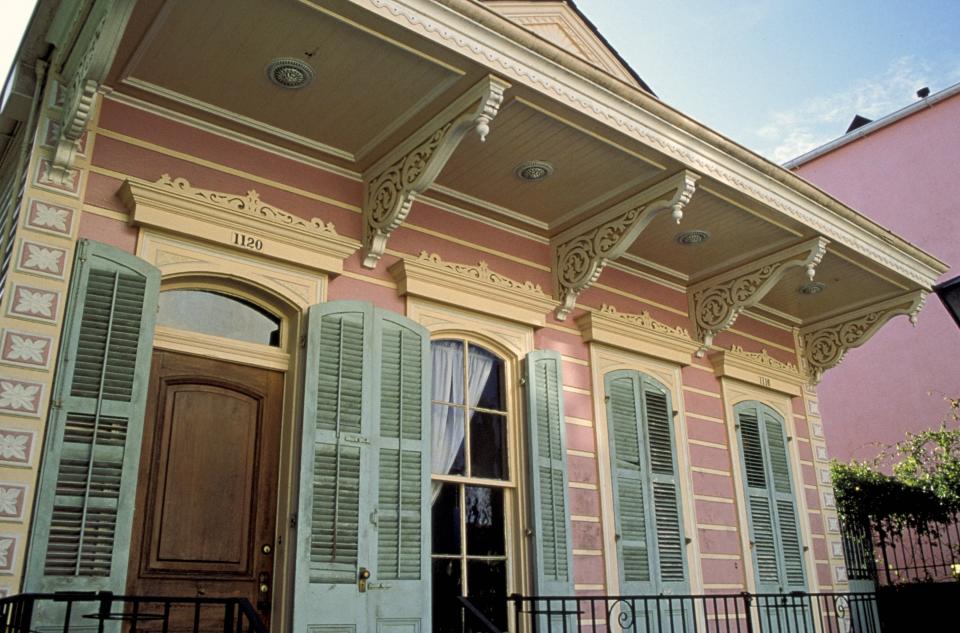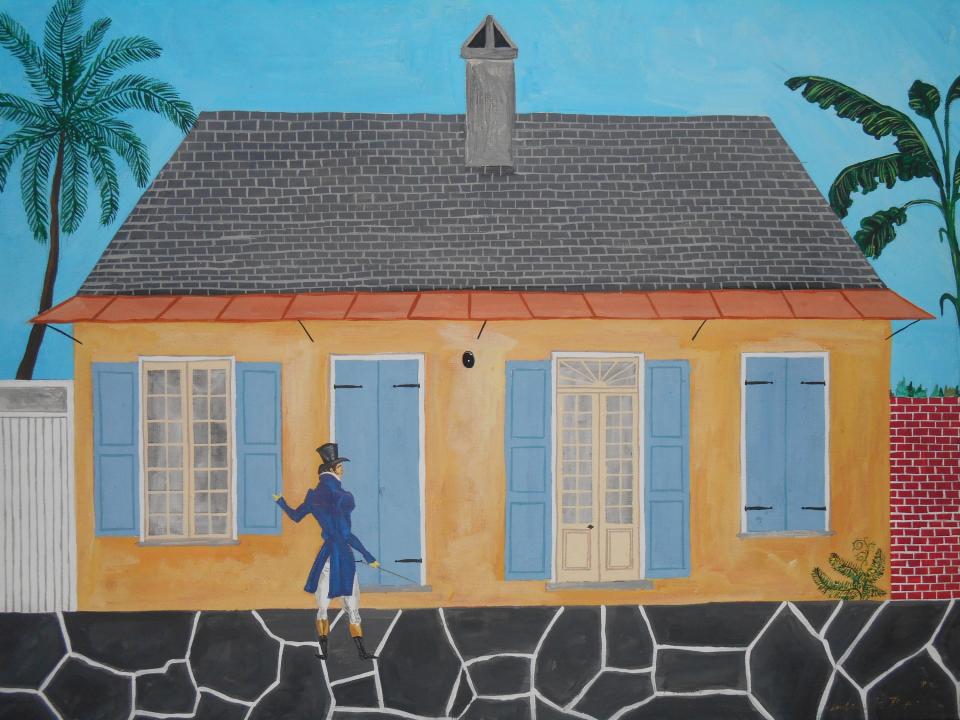The Black Architects Who Built New Orleans
As anyone who has lived in or visited New Orleans will tell you, it's a city of sublime architecture. Dreamy rows of pink, yellow, blue, and lavender confections line New Orleans’s oldest neighborhoods. These small stucco dwellings with pointed rooftops and pronounced dormers, known as Creole cottages, are indigenous to America’s Gulf Coast. In New Orleans, they saturate the landscape like jasmine permeates this magic city. Many Creole cottages and their grander sisters, Creole town houses, were designed by a class of distinguished Black architects in the antebellum South. These designers played a crucial role in the city’s architectural landscape, while developing a vernacular style emblematic of this multicultural region.
“Not many people realize there was a prosperous group of free men and women of color in the 18th and 19th centuries,” says Andrew LaMar Hopkins, a contemporary artist whose work shines historic light on scenes of noble Creole life in early New Orleans. “Louisiana had one of the largest, richest Black populations, due to its French and Spanish background, which is different from the rest of Anglicized America.”
Before the Civil War, New Orleans had the largest group of free people of color in the United States. Despite oppression and discrimination, these free people of color overcame great odds. Black architects and their prolific work in this era are a part of history that’s omitted from schoolbooks, erased and forgotten, yet proudly resurfaces on meandering strolls through New Orleans’s oldest quarters: the French Quarter, Tremé, and Faubourg Marigny. Spanish and French rule helped shape this side of town, downriver from Canal Street, allowing enslaved people to buy their freedom and Black architects to design and build.

New Orleans, Creole Cottage With Victorian Trimmings
Some members in this “class of free people of color had…wealth and status in New Orleans, and that’s what made this city so culturally rich and fascinating,” observes Danielle Del Sol, executive director of the Preservation Resource Center of New Orleans. “In every other part of America, from the late 1700s to 1800s, many people of color were slaves. In New Orleans, there was a whole thriving class of free people of color from Haiti and other Caribbean islands, and freed African slaves.”
Two of the most prominent Black families responsible for designing, building, and developing these architectural gems were the Dollioles and the Souliés, pillars of the community and integral to the city’s development. Jean-Louis Dolliole, educated in France, was perhaps the most prolific Black architect of his time. His family owned 36 properties around New Orleans (not all of them were designed by him).
Norbert Soulié was trained in architecture under Henry Latrobe, whose father, Benjamin, was an architect behind the Capitol building in Washington, D.C. Soulié designed and built Creole cottages, Creole town houses, and Anglo-influenced row houses. In 1831, the Soulié family designed and built the Louisiana Sugar Refinery in Greek Revival style.
Hopkins, originally from Mobile, Alabama, says that in grade school he was taught the struggle of Black Americans and the history of slavery. “They didn’t teach us about free people of color,” Hopkins says. “Young people see the past and they’re angry, and they should be. We should all be angry. But there were people who weren’t slaves; they were Black and prosperous. It’s inspiring to know about this whole other side of this culture.”

While some of these homes remain modern-day residences, a few are open to the public. The Soniat House Hotel, one of New Orleans’s finest family-owned boutique properties, was designed by Francois Boisdore, a free man of color. The architect was commissioned by a white landowner to design a Creole town house and, later, a second one across the street. The Soniat House Hotel comprises both town homes and is pristinely restored. The Spanish wrought-iron balconies, curved, elegant staircases, and arched paths for horse-drawn carriages are just as they were nearly 200 years ago.
The Free People of Color Museum offers a wealth of information on free people of color in New Orleans, told by their descendants. The museum rests inside a grand white mansion built by the Cuban designer Benjamin Rodriguez in 1859. “The architecture designed by these Creole families and architect types had French, Spanish, and African influence, much of it by way of the Caribbean,” Del Sol says.
Enslaved people contributed greatly to the foundation of New Orleans, as did free craftsmen, masons, and millworkers. Del Sol adds, “The Black citizens who lived in New Orleans, by choice or otherwise, had immeasurable impact on the architecture of the city. There’s much evidence that shotgun houses, which are a symbol of our city, have origins in Africa.”
The challenges they faced were incredible, however. Though deemed “Free” people of color, they certainly did not enjoy the freedoms that white residents of the city had. “Discrimination was ever-present and oppressive, and the freedoms they did have were constantly threatened,” de Sol continues. “Free people of color were integral in important real estate development in the city in the early 19th century—a legacy that helps define our city today—but they did it against all odds, amidst constant oppression. Some of the free families of color didn’t stay to live amongst their legacy. Life was still oppressive and they suffered discrimination. Some families even left the United States, such as the Soulié family, who moved to France.”
Nevertheless, Hopkins wants the public to remember the origins of the city's architecture, too. “This forgotten history is something to be very proud of. They were architects, they were building owners, and we can walk through the old quarters and still see their legacy today.”
Originally Appeared on Architectural Digest

